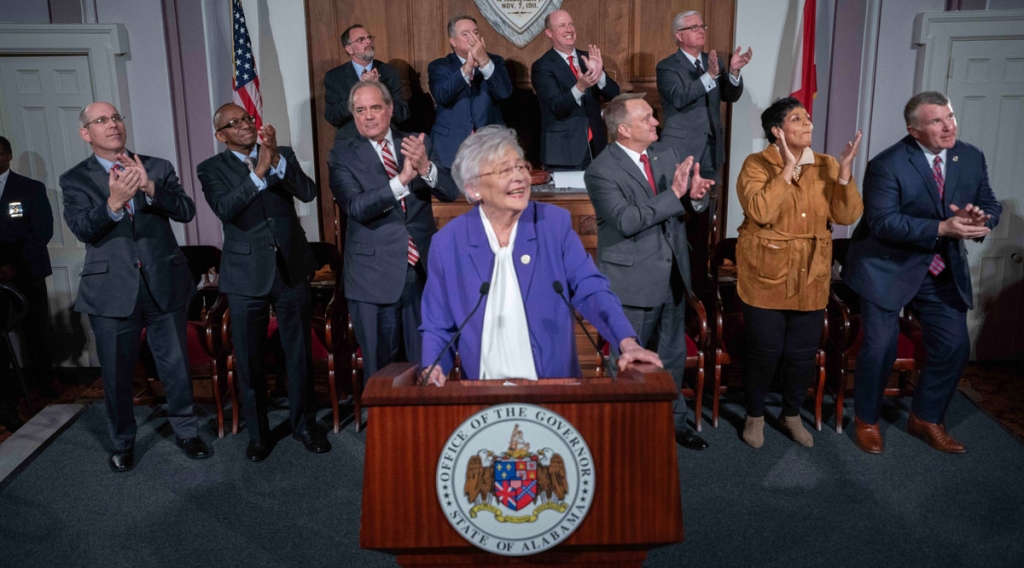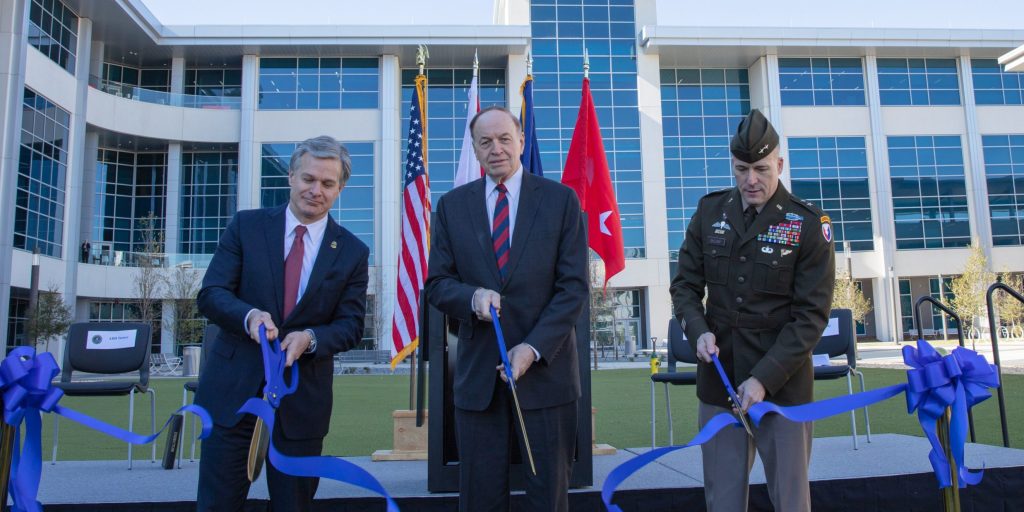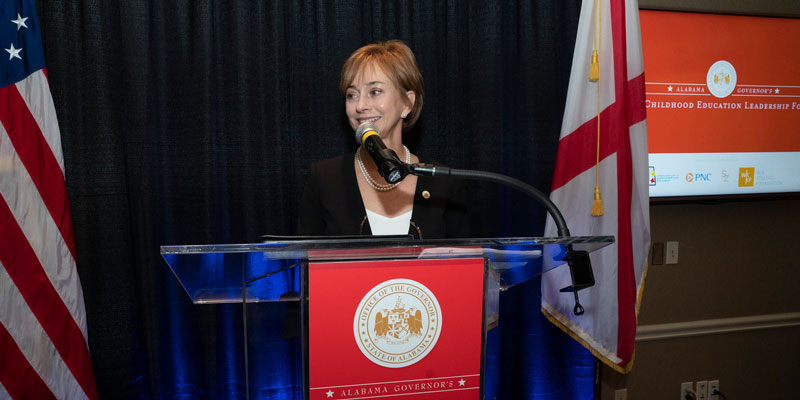The U.S. Senate on Thursday gave final passage to two appropriations packages that will avert a government shutdown and fund the government through the end of Fiscal Year 2020.
H.R. 1158, the national security related package, passed 81-11 while H.R. 1865, the domestic spending package, passed 71-23. The measures resulted from a compromise agreement between the Senate and House, as well as between both parties.
Senator Richard Shelby (R-AL), the chair of the Senate Appropriations Committee and its subcommittee on defense, led the negotiations along with House Appropriations Committee Chairwoman Nita Lowey (D-NY).
Yellowhammer News has already reported on some of the top ways Alabama is set to benefit from the Shelby-negotiated appropriations, including the NASA portion, funding that could complete the Mobile Harbor deepening/widening project and construction on the Birmingham Northern Beltline resuming.
However, those important examples only represent the tip of the iceberg.
RELATED: Aderholt praises doubling of UAH-based tornado study’s federal funding
First, in a statement regarding H.R. 1158, Shelby said, “The funding in this appropriations measure provides for our men and women in uniform, ensures Alabama remains at the forefront of space exploration, and allows us to continue preventing current and emerging threats against the United States through cutting-edge technology.”
“Alabama plays a vital role in our national defense, and this legislation will make certain that our state remains a major player in keeping our nation safe. I look forward to the impact this legislation will have on the state and nation,” he added.
H.R. 1158 contains the following provisions impacting Alabama:
Impacting the production and use of missiles and helicopters in the Wiregrass region:
· $1.224 billion for flight training at Fort Rucker, an increase of $142 million from last year to address the Army pilot shortage;
· $506 million for Future Vertical Lift research to accelerate development of helicopters flown at Fort Rucker;
· $150 million to upgrade Coast Guard MH-60T Jayhawk helicopters;
· $407 million for Terminal High Altitude Area Defense (THAAD) missiles;
· $292 million for Joint Air-to-Ground Missiles (JAGMs);
· $562 million for Joint Air-Surface Standoff Missile (JASSMs) and $123 million for Long Range Anti-Ship Missiles (LRASMs);
· $727 million for Hellfire missiles, an increase of $243 million from FY2019, which are made in Troy and used for training at Fort Rucker; and
· $178 million for Javelin missiles for the Army and Marine Corps.
Impacting North Alabama:
· Army Research – $12.5 billion, an increase of $1.5 billion from last year, for investments in transformational technologies to address modern and future Army warfighting needs.
· Missile Defense – $10.4 billion for the Missile Defense Agency (MDA), including $628 million to support urgent MDA unfunded priorities such as space sensors, hypersonic defense, and cybersecurity.
· Hypersonic weapons – $1.9 billion to support and accelerate offensive and defensive hypersonics research and prototyping efforts, an increase of $362 million from last year. This funding includes $161 million to address an unfunded priority for the Army Hypersonic Weapons System.
· Cyber – $268 million in additional funding to expand and accelerate cyber research across the Department of Defense, and an additional $200 million to support the Department’s new 5G program.
· Military Space – Fully funds National Security Space Launch and Space Command, and includes funding to establish Space Force and Space Development Agency.
· Civil Space – $2.586 billion for the Space Launch System (SLS), including $300 million for the Exploration Upper Stage (EUS), $44 million to standup the Lunar Lander office at Marshall Space Flight Center (lander program total funding is $744 million), and $110 million for Nuclear Thermal Propulsion (NTP), of which $80 million is for a flight demonstration mission no later than 2024.
· FBI – $485 million for FBI Construction, which supports the ongoing and growing efforts in Huntsville.
Impacting Anniston:
· $84.5 million for FEMA’s Center for Domestic Preparedness, including $66.8 million for education, training, and exercises, as well as $18.2 million for high priority facilities renovation requirements. In addition, $3 million will be prioritized for competitively awarded FEMA-certified rural and tribal training; and
· $250 million for Hydra rockets, which are built in Anniston and fired from Army and Marine Corps helicopters.
· Funding for Army Vehicles overhauled and maintained at Anniston Army Depot (ANAD):
· $2.1 billion to continue modernizing M1 Abrams tanks;
· $912 million for Stryker vehicles, an increase of $519 million from last year;
· $579 million for Paladin Integrated Management artillery vehicles; and
· $80 million for M88A2 Hercules Improved Recovery vehicles.
Impacting Mobile’s shipbuilding industry:
· One additional Expeditionary Fast Transport (EPF) ship, as well as $49 million to convert an EPF into an Expeditionary Medical Transport;
· Full funding for the FFG(X) Frigate program; and
· An additional $650 million for LHA-9, an amphibious assault ship.
Other provisions impacting Alabama:
· $7 million for the Gulf of Mexico Fisheries Initiative, including $5 million to conduct an independent population assessment of greater amberjack in the Gulf of Mexico;
· $5 million to ensure successful implementation of “Reef Fish Amendment 50,” which delegates federal management of red snapper to the Gulf States;
· $2.6 million for National Oceanic and Atmospheric Administration (NOAA) to implement and enforce the Seafood Import Monitoring Program;
· 34.5 million to support staffing and operations at the National Water Center (NWC) located in Tuscaloosa, Alabama;
· $6 million for remote water sensing research at the University of Alabama; and
· Funding and direction to fully staff the NOAA Disaster Response Center in Mobile, Alabama.
Shelby also released a statement regarding H.R. 1865.
“Completing the Fiscal Year 2020 appropriations process is good news for the nation and Alabama,” he remarked. “From investing in our state’s infrastructure and supporting agricultural development to funding groundbreaking medical research, this package addresses many important priorities. I am proud of this bipartisan agreement and look forward to witnessing the positive impact this funding will have in my home state.”
H.R. 1865 contains the following provisions impacting Alabama:
Agriculture, Rural Development, Food and Drug Administration, and Related Agencies:
· The final bill retains the $25 million increase for Watershed and Flood Prevention Operations (WFPO) for a total of $175 million, with a $70 million set-aside for certain projects.
· Includes $20 million for the Food and Drug Administration (FDA) Building and Facilities improvements for seafood safety to support FDA’s Dauphin Island Lab.
· Contains $5 million for the Rural Water and Waste pilot.
· The bill includes language specifying that Rural Water and Waste Disposal program account that projects utilizing iron and steel shall use iron and steel products produced in the United States.
· Includes $5 million to combat cotton blue disease, $3 million for advanced poultry production technology development, $1.5 million for alternative technologies for poultry waste utilization, $1.2 million to study harmful algal bloom impacts on aquaculture, an additional $1 million for shrimp aquaculture research, and $1 million to explore salmonella exposure in livestock at Auburn University. Auburn will also continue to partner with Agricultural Research Services for training and workforce development of scientists for the National Bio and Agro-defense Facility.
· Animal and Plant Health Inspection Service: $1 million increase for Cogongrass Management.
· Farm Service Agency: Report language is included that directs the U.S. Department of Agriculture (USDA) to modify its regulations so that producers of farm-raised fish are eligible for death losses under ELAP and that bird predation and disease be deemed eligible loss conditions.
· Animal and Plant Health Inspection Service: Maintains FY2019 funding for the National Feral Swine Damage Management Program.Energy and Water Development, and Related Agencies:
Corps of Engineers:
· $378 million recommended in the Construction account for a Regional Dredge Demonstration Program in the central Gulf of Mexico. Mobile Harbor would be eligible for these additional funds.
· $50 million above the budget request in the Operation and Maintenance account for Donor and Energy Transfer Ports. Funds will benefit Mobile Harbor.
· $10.975 million for Coastal Inlets Research Program in the Operation and Maintenance account and report language recommending additional funding to establish a multi-university-led effort for connecting terrestrial and coastal models and to continue work with the National Oceanic and Atmospheric Administration’s National Water Center in Tuscaloosa on protecting the nation’s water resources.
· Includes $16 million for Aquatic Nuisance Control Research in the Operation and Maintenance account for research and development related to harmful algal blooms.Department of Energy:
· $230 million for a new program to demonstrate Advanced Reactors and an additional $55 million for Advanced Reactor Technologies, including $20 million for the industry-led Advanced Reactor Concepts program.
· $25 million for the EPSCoR program and requested language regarding biennial implementation of grant solicitations.
· Funding to support the Department of Energy’s National Carbon Capture Center in Wilsonville, consistent with the cooperative agreement.
· $56 million for Academic Alliances and Partnerships within the National Nuclear Security Administration, and report language encouraging new centers of excellence in materials research.Independent Agencies:
· $30 million for the Delta Regional Authority, including $15 million for flood control, basic public infrastructure development, and transportation improvements.
· $175 million for the Appalachian Regional Commission, including $16 million for a program of industrial site and workforce development in Southern and South Central Appalachia, of which $13.5 million is for Southern Appalachia.Interior, Environment, and Related Agencies:
· Fish and Wildlife Service Asian Carp – Provides $25 million, an increase of $14 million, to combat Asian Carp and enhance efforts in sub-basins of the Mississippi River, which includes key areas of Alabama.
· Environmental Protection Agency (EPA) Technical Assistance Grant Programs – For the two programs for rural technical assistance, one increased to $17.7 million, which is a $2.7 million increase, and a new program is funded at $13 as requested.
· Office of Surface Mining Reclamation and Enforcement Abandoned Mine Land Pilot Program – $115 million is included, equal to the fiscal year 2019 enacted level.
· Use of Iron and Steel – The bill continues a general provision to ensure that EPA requires the use of American iron and steel in State Revolving Fund projects.Labor, Health and Human Services, Education, and Related Agencies:
· $41.7 billion for the National Institutes of Health (NIH):
· Includes $45 million in NIH for chronic disease centers; and
· $50 million for NIH biomedical research facilities.
· $6.44 billion for National Cancer Institute (NCI), an increase of $299.4 million, including $200 million in targeted funding for NCI competitive grants.
· $832.9 million for NIH National Center for Advancing Translational Sciences, an increase of $26.5 million.
· $578.1 million for Clinical and Translational Science Award, an increase of $18.4 million.
· $500 million for the All of Us precision medicine study, a $161 million increase.
· $25 million in targeted funding for the Childhood Cancer Survivorship, Treatment, Access, and Research (STAR) Act.
· $3.8 billion in opioid funding, including $1.5 billion for State Opioid Response Grants.
· $3.9 billion for mental health programs, an increase of $328 million.
· $50 million in funding for Medical Student Education for states with highest projected physician shortages, including $15 million for supplemental grants and $35 million to fund the remaining 2019 applicants.
· $1.3 billion, an increase of $20 million, for Career and Technical Education state grants.· $30 million in continued funding for Department of Labor Workforce Opportunities for Rural Communities in the Delta Regional Authority and Appalachian Regional Commission regions.
Military Construction:
· Funds three military construction projects totaling $84 million in Alabama:
o Includes $38 million for an Aircraft and Flight Equipment Building at Redstone Arsenal;
o $12 million for a National Guard Readiness Center in Foley; and
o $34 million for Enlisted Transient Training Barracks in Anniston.Transportation, Housing and Urban Development, and Related Agencies:
· Provides funding for the Better Utilizing Investments to Leverage Development (BUILD) grant program.
· Provides funding for the Federal Aviation Administration (FAA):
o Grants-in-aid for airports;
o Contract towers;
o Research for advanced materials and structural safety;
o Research on airfield pavement; and
o Aviation workforce grants.
· Provides funding for Federal Highway Administration (FHWA) INFRA grants.
· Includes $30 million in funding for Alabama’s Appalachian Development Highway System.
· Includes funding for Federal Railroad Administration (FRA) CRISI grants, the Maritime Administration’s Small Shipyard Grant Program, and Port Infrastructure grants, and Community Development Block grants.
Sean Ross is the editor of Yellowhammer News. You can follow him on Twitter @sean_yhn













